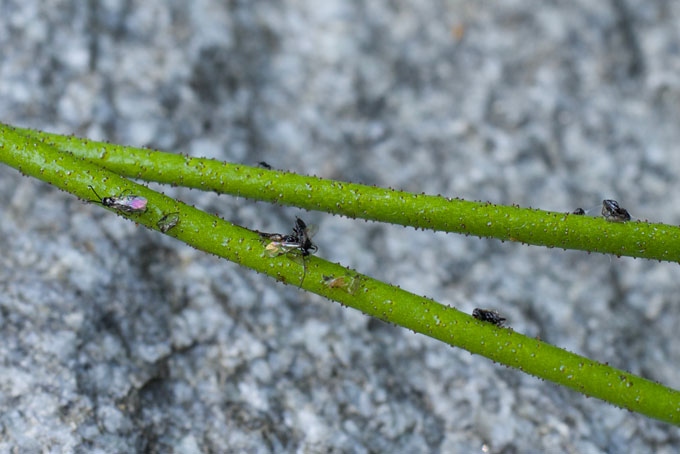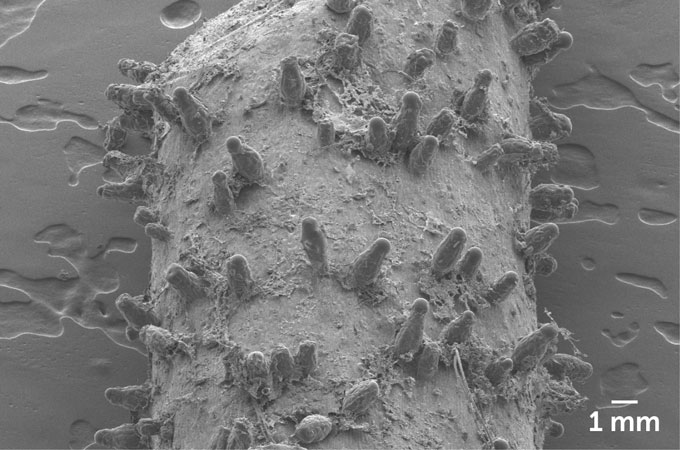Gleaming, gluey, deathtrap hairs have betrayed the secret identity of a well-known wildflower: It’s a carnivore.
A species of false asphodel (Triantha occidentalis) uses enzyme-secreting hairs on its flowering stem to snare and digest insects, researchers report in the Aug. 17 Proceedings of the National Academy of Sciences. Scientists have known about T. occidentalis since the 19th century, but its taste for meat has gone undetected until now.
Sticky hairs by themselves aren’t unusual — many noncarnivorous plants use them to defend against pests. But T. occidentalis has qualities that some meat-eating plants share: a love of bright, boggy, nutrient-poor habitats and the absence of a gene that fine-tunes how plants get energy from light. Together, those features felt like pieces of a jigsaw puzzle hinting at carnivory, says botanist Sean Graham of the University of British Columbia in Vancouver.
To solve the puzzle, Graham and colleagues needed to know if the wildflower pulls nutrients from insect corpses. Luckily, T. occidentalis grows along North America’s West Coast, from Alaska to California, and can be found on hikes near Vancouver. “They’re right on our doorstep,” Graham says.
 Experiments confirm that Triantha occidentalis wildflowers are carnivorous, getting nutrients from insects that get caught in their sticky stem hairs (shown).Qianshi Lin
Experiments confirm that Triantha occidentalis wildflowers are carnivorous, getting nutrients from insects that get caught in their sticky stem hairs (shown).Qianshi Lin
The team attached fruit flies fed with nitrogen-15, an isotope that can be used to track changes in nitrogen levels, to the flowering stems of bog-dwelling T. occidentalis plants in British Columbia’s Cypress Provincial Park. Over half of the wildflowers’ nitrogen came from the fruit flies, the team found. Those levels are comparable to known carnivorous plants. What’s more, the wildflowers’ sticky hairs oozed phosphatase, a digestive enzyme that many carnivorous plants secrete to consume prey.
Most of the world’s roughly 800 meat-eating plant species set traps and flowers far apart to avoid killing pollinating visitors (SN: 2/6/18). T. occidentalis bucks that trend. “Putting your traps close to your flowers is, on the surface, a really big conflict,” Graham says. But the plant’s hairs may be just sticky enough to catch small flies and beetles without entrapping bigger pollinators such as bees and butterflies.
T. occidentalis’ sticky hairs might also hint at how some meat-eating plants evolved. In nutrient-poor soils, it may have been advantageous for some plants to co-opt hairs for carnivory, Graham says. “The insects are being trapped anyway, so might as well use them.”
 Sticky hairs (shown in this scanning electron microscope image) on the flowering stem of a species of false asphodel secrete an enzyme that many carnivorous plants use to digest prey.Qianshi Lin
Sticky hairs (shown in this scanning electron microscope image) on the flowering stem of a species of false asphodel secrete an enzyme that many carnivorous plants use to digest prey.Qianshi Lin

